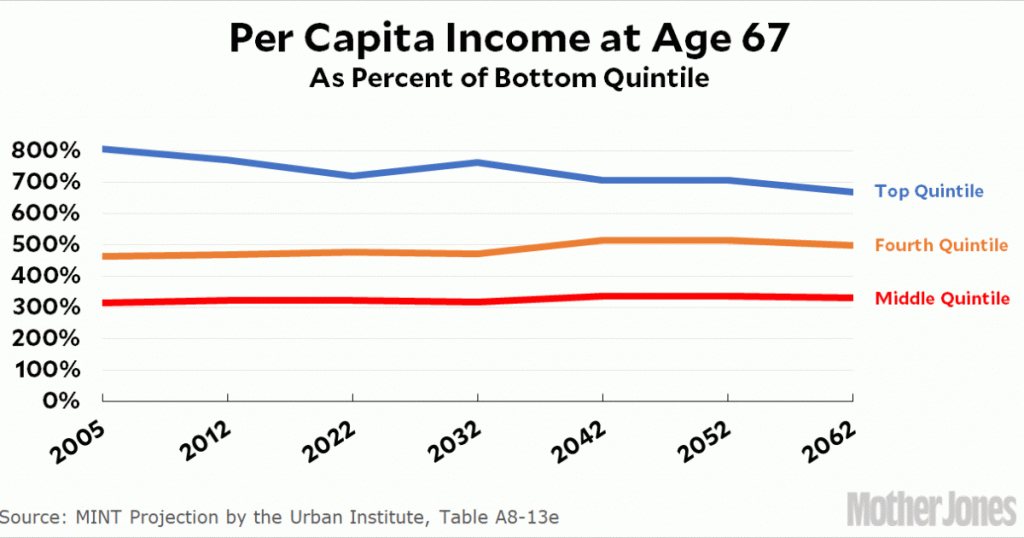Are We Facing a Growing Gap Between Rich and Poor Retirees?
Susan Tompor writes in the Detroit Free Press (via the LA Times) today:
The rules of the retirement game just got a sizable overhaul in Congress, giving a nod to the reality that many Americans can’t afford to quit working. The changes aren’t massive enough to put to rest concerns about an upcoming retirement crisis, in which some forecast a growing gap between the haves and have-nots.
Tompor’s article is a nice summary of the new retirement rules, which are indeed mostly a good thing. But is there really an upcoming retirement crisis? And although “some” may forecast a growing gap between the haves and the have nots, what do actual projections say about that? Here are projections from the Urban Institute based on the MINT retirement model for average income of the middle-class and the affluent as a percentage of the income of the poor:
Surprisingly, not only is the gap between rich and poor retirees not skyrocketing, it’s not even growing. For retirees in 2005, the rich earned about 800 percent of the income of the poor. For retirees in 2062, MINT projects that it’s a little less than 700 percent.
In a different table (A8-12g for those who want to check), you’ll also learn that the income of retirees as a percent of the poverty rate is also projected to rise. And the number of seniors under the poverty line is projected to decline.
These are averages, and obviously the retirement income of the poor is nothing to write home about. We should increase Social Security payouts at the bottom of the income ladder to make up for that. However, although you can get different answers about the gap between rich and poor retirees by looking at different projections, the evidence suggests that it will grow by a small amount at most, and probably not all.





